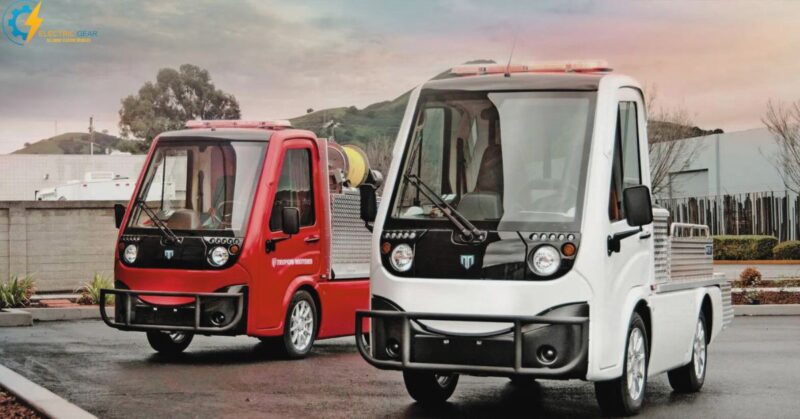EVs, in early 2009, were designed with resistive heating using a high electricity resistance metal coil and were believed to consume a lot of battery power; hence, the battery is the pivot of all energy of an EV; it soon became inevitable to replace the resistive heater with one that is more efficient, and EV owners can switch it on for prolonged times without hesitation.
Switching from Resistive Heating to a Heat Pump
Currently, the resistive electric car heater is being used in that convert electrical energy into thermal energy by a high-resistance nichrome coil. Heat is produced by forcibly resisting electricity into the coil, which is then transferred either into air or water around the coil. In EVs, it remained a reliable heating agent for a long time but has to be gone in the dark zone owing to its capacity to reduce EV range considerably.
Heat Pump in electric cars
Transferring from resistive heating to heat pump is a transitional process spreading over years of improvement and technological advancement. When it comes to the ratio of energy used to heat produced, a heat pump is more efficient at defrosting and fogging a car than a resistive heater or a traditional vehicle heater. It is also thought to be more innovative.
Heat pumps in EVs are now highly appreciated because increased mileage is every owner’s dream, they are much more energy efficient and only require 1 to 2 kWh of energy every hour.
The function of a heat pump in an electric car
The performance of a heat pump is unique and unparalleled in an EV, and it, along with de-humidifying the interior of the vehicle, defogs the windshields and comforts its commuters by providing them with the required heat. These heat pumps can be a unified part of the vehicle’s HVAC system or a separate standalone unit, unlike ICEs.
A heat pump works in the same way that an air conditioner’s compressor does, but in the opposite direction. It heats the air by compressing it, and this advanced heat pump consumes nearly 1 kW of battery energy to produce 4 kW of heat energy, which is four times more efficient in energy to-power ratio in an EV.
EV heaters are assumed to be environmentally friendly; they generate no emissions. They are at higher performance levels than traditional vehicles, consume much less energy, and generate a favorable environment for the battery itself by improving its charging time and efficiency.
Heat pump pros and cons
EV heaters use battery power to produce heat and perform differently while using different methods from resistive heaters. Gas-powered vehicles use heaters to make the cabin cozy and have nothing to do with the vehicle’s mileage and performance. Unlike ICE heaters, EV heaters are also assigned to keep the battery warm because the battery tends to lose range in cold climates.
Heat pumps work on a different formula than other electric heaters; they only move the energy from one place to another, from the battery pack to the interior of the car. The formation of ice crystals on battery packs is also prevented by using a heat pump.
Pros of EV Heaters
Many benefits are associated with using an EV heater in your electric car. Some of the key benefits are listed below. EV heaters are ultra-efficient and produce maximum energy as against the power they consume.
You can control the temperature of the cabin with a thermostat. EV heaters are installed with a timer system to turn on and off at times set by you. One may not need to go for this practice occasionally. These heaters depend on EV battery power for producing heat, and you are free from engine noise.
EV heaters are Green House Gas emissions-free and are assumed cleaner and eco-friendly. These are inexpensive because they do not require starting the engine, which burns costly fuel.
Cons of EV Heaters
The downsides are far less than the benefits associated with using EV heaters. However, they can’t be denied at all and are listed below. Leaving halfway by an EV can be the initial apprehension of EV drivers forcing them to avoid excessive use of EV heaters.
The cost of EVs is another downside, and most standalone heaters are costly, causing an additional burden on EV owners.
Electric car heater 12 v
Different 12-volt DC heaters are available in the market. They can be fitted anywhere in the vehicle and produce heat only when turning them on. It takes energy directly from the vehicle’s battery and, in this way, reduces the range of the vehicle.
How does the heater work in a Tesla
Earlier Tesla vehicles needed to be more advanced to use the heat pump to heat their cabins and batteries. EV heaters are essential for batteries also, as batteries reduce performance under cold temperatures. However, due to the range anxiety among people, Tesla manufacturers introduced Model y with a heat pump consuming less electricity, thus, making it more efficient.
All Tesla vehicles (before Model Y) used resistive heaters to heat their cabins, where electricity is passed through a resistive heating element, which creates heat that blows out of the air vents. Resistive heating is more efficient in converting electrical power into heat, and no energy is wasted. However, it still is considered detrimental for mileage.
The heat pump in Tesla Model y most likely acts as a compressor in AC does. However, its function here is otherwise than that of AC. A heat pump warms the air by compressing it and sending it into the cabin by pipes for different purposes.
Heat, in this process, does not pass through a highly resistant coil consuming a lot of energy; instead, a small compressor is used to maximize the battery performance.
Risks related To EV Heaters
EV heaters are likely to pose a few risks. Some of these include:
Shock Risk
Just like other electrical appliances, shock risks are also associated with EV heaters. You should hire a qualified technician to install standalone EV heaters. They should not be exposed to the people in the vehicle as they use high voltage, so electrocution is possible if left unattended and not used with extreme care.
Drainage of Battery
Drainage of the battery is inevitable if the EV heater is used for prolonged periods. Using the heater in frigid weather does comfort the passengers but can cause the mileage to be considerably reduced. The resistive heater produces heat with a high-resistance coil that consumes enough power to convert it into heat. However, in recent electrical vehicles, more energy-efficient heat pumps have been introduced to address the issue of range anxiety.
Furthermore, one must try to turn the heater on before going on journeys while the vehicle is plugged in for charging. In this way, you can make the environment cozy of an EV cabin at no additional expense at the cost of range.
Fire Risks
We have often heard of a house set on fire by negligence in using electric heaters at home. The same is the case with electric heaters in EVs. Conventional vehicles are the exception to these fire-causing risks as their heater temperature never exceeds a certain level because they re-use engine heat.
In contrast, EV heaters are dangerous because they can overheat and cause a fire if left unattended for prolonged periods. In particular, this happens when the heater is turned on for a long time or put in some enclosed places.
Heating in EVs vs. GAS-powered cars
There is a wide gulf of technology between both as conventional vehicles re-use engine combustion heat for heating. ICE heaters are used once the vehicle is heated, which takes slightly more time to get warm. EVs, in contrast, use all-electric power that works the same way our home electric heaters work. Recent Models of EVs, like the Tesla Model Y, are designed with heat pumps to get maximum range from batteries.

Imran is an experienced content writer who crafts engaging and informative articles for a variety of industries. With a keen eye for detail and a passion for storytelling, Imran delivers high-quality content that resonates with readers. Whether he’s writing blog posts, social media content, or website copy, Imran is committed to delivering compelling content that drives results.







